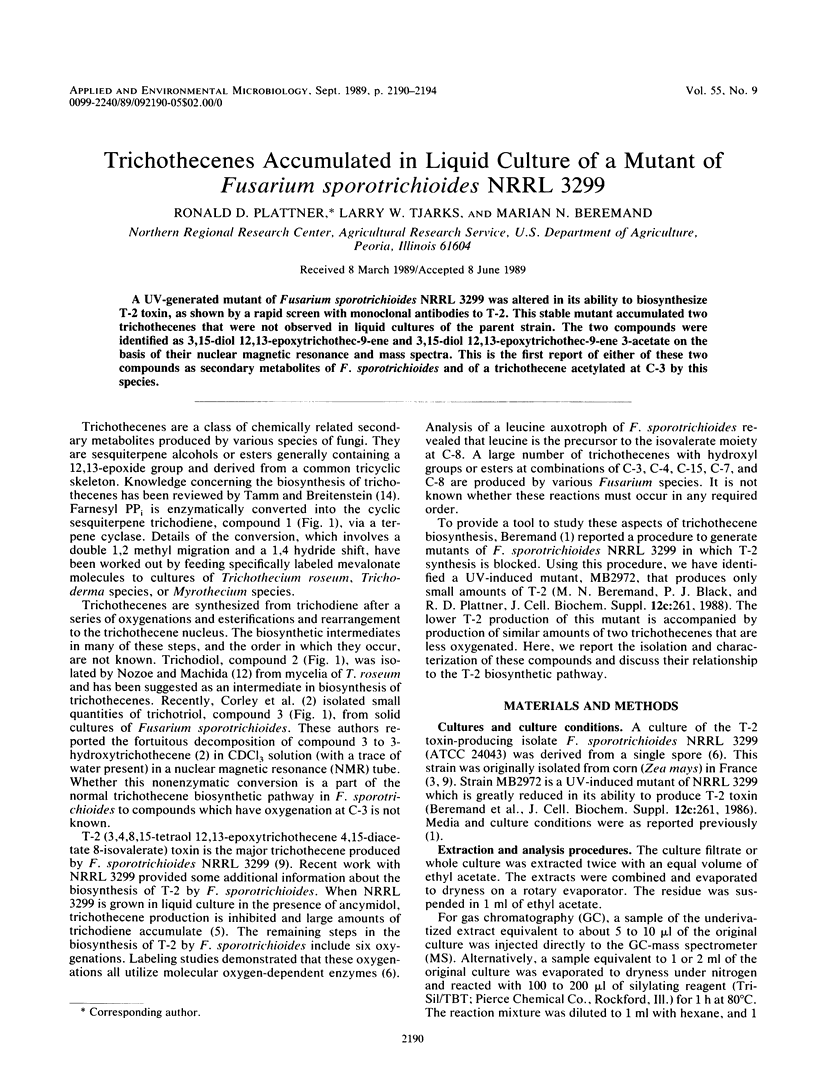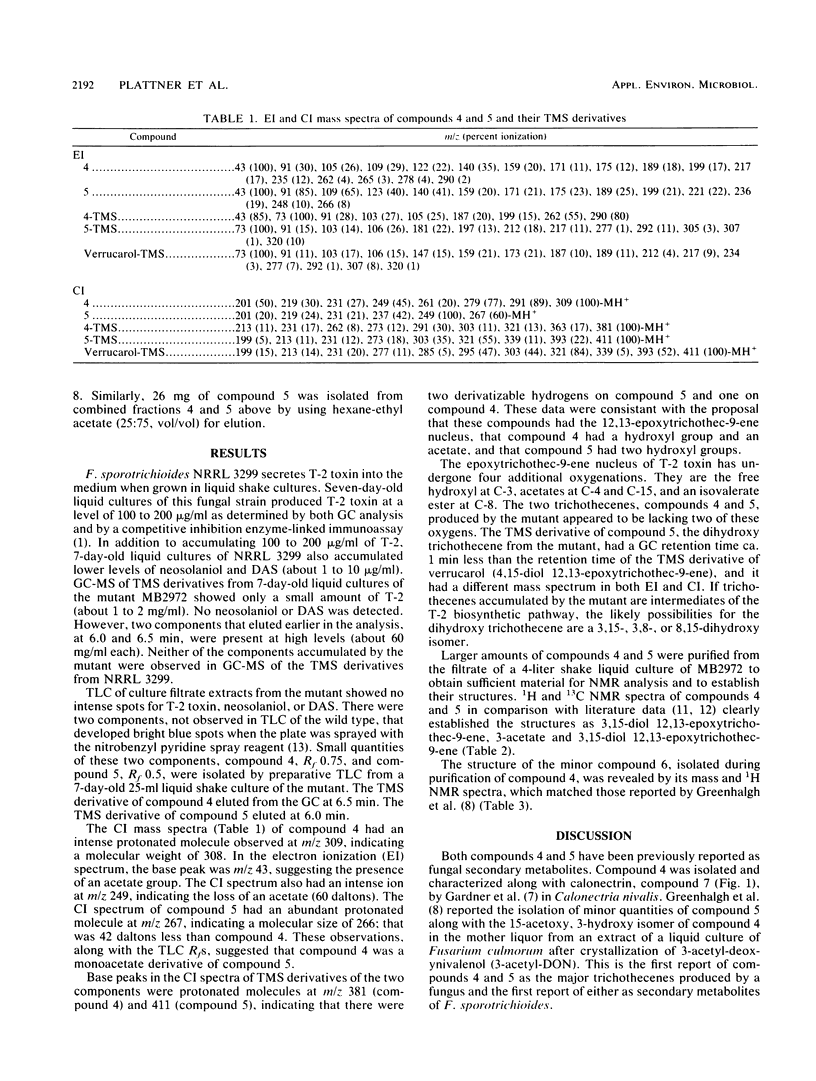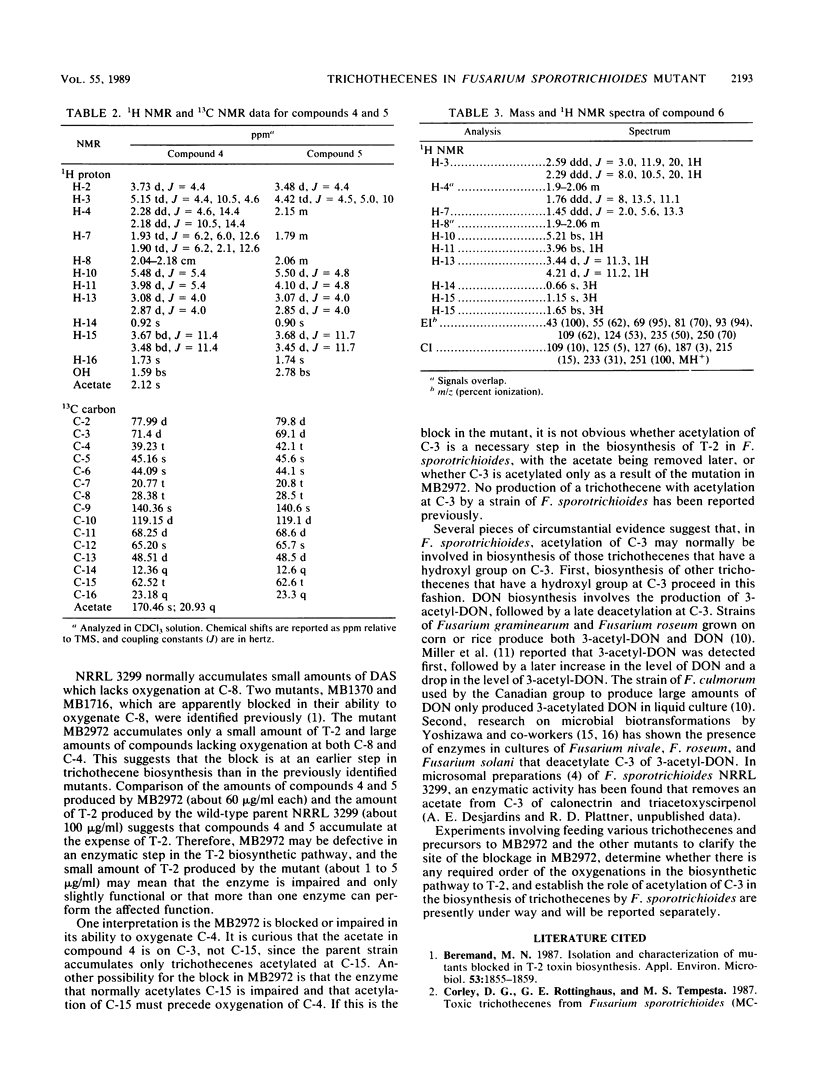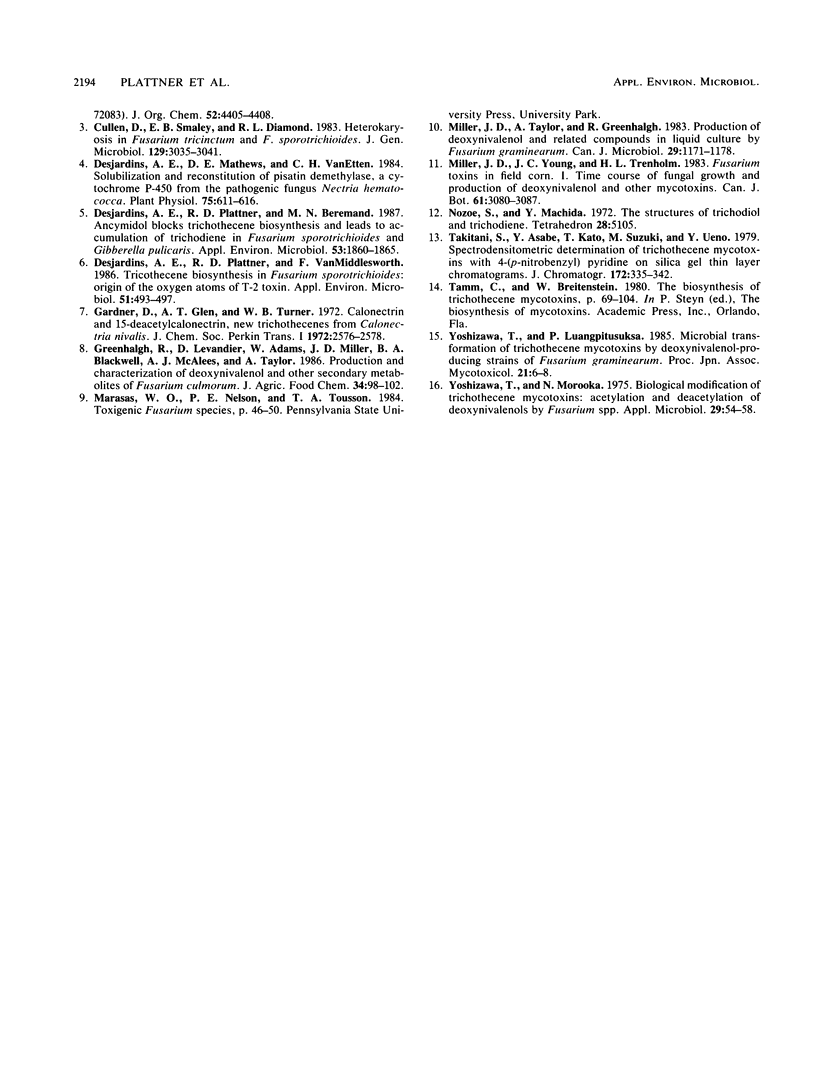Abstract
A UV-generated mutant of Fusarium sporotrichioides NRRL 3299 was altered in its ability to biosynthesize T-2 toxin, as shown by a rapid screen with monoclonal antibodies to T-2. This stable mutant accumulated two trichothecenes that were not observed in liquid cultures of the parent strain. The two compounds were identified as 3,15-diol 12,13-epoxytrichothec-9-ene and 3,15-diol 12,13-epoxytrichothec-9-ene 3-acetate on the basis of their nuclear magnetic resonance and mass spectra. This is the first report of either of these two compounds as secondary metabolites of F. sporotrichioides and of a trichothecene acetylated at C-3 by this species.
Full text
PDF




Selected References
These references are in PubMed. This may not be the complete list of references from this article.
- Beremand M. N. Isolation and characterization of mutants blocked in T-2 toxin biosynthesis. Appl Environ Microbiol. 1987 Aug;53(8):1855–1859. doi: 10.1128/aem.53.8.1855-1859.1987. [DOI] [PMC free article] [PubMed] [Google Scholar]
- Cullen D., Smalley E. B., Dimond R. L. Heterokaryosis in Fusarium tricinctum and F. sporotrichioides. J Gen Microbiol. 1983 Oct;129(10):3035–3041. doi: 10.1099/00221287-129-10-3035. [DOI] [PubMed] [Google Scholar]
- Desjardins A. E., Matthews D. E., Vanetten H. D. Solubilization and Reconstitution of Pisatin Demethylase, a Cytochrome P-450 from the Pathogenic Fungus Nectria haematococca. Plant Physiol. 1984 Jul;75(3):611–616. doi: 10.1104/pp.75.3.611. [DOI] [PMC free article] [PubMed] [Google Scholar]
- Desjardins A. E., Plattner R. D., Beremand M. N. Ancymidol blocks trichothecene biosynthesis and leads to accumulation of trichodiene in Fusarium sporotrichioides and Gibberella pulicaris. Appl Environ Microbiol. 1987 Aug;53(8):1860–1865. doi: 10.1128/aem.53.8.1860-1865.1987. [DOI] [PMC free article] [PubMed] [Google Scholar]
- Desjardins A. E., Plattner R. D., Vanmiddlesworth F. Trichothecene Biosynthesis in Fusarium sporotrichioides: Origin of the Oxygen Atoms of T-2 Toxin. Appl Environ Microbiol. 1986 Mar;51(3):493–497. doi: 10.1128/aem.51.3.493-497.1986. [DOI] [PMC free article] [PubMed] [Google Scholar]
- Gardner D., Glen A. T., Turner W. B. Calonectrin and 15-deacetylcalonectrin, new trichothecanes from Calonectria nivalis. J Chem Soc Perkin 1. 1972;20:2576–2578. doi: 10.1039/p19720002576. [DOI] [PubMed] [Google Scholar]
- Takitani S., Asabe Y., Kato T., Suzuki M., Ueno Y. Spectrodensitometric determination of trichothecene mycotoxins with 4-(p-nitrobenzyl)pyridine on silica gel thin-layer chromatograms. J Chromatogr. 1979 Apr 21;172:335–342. doi: 10.1016/s0021-9673(00)90970-1. [DOI] [PubMed] [Google Scholar]
- Yoshizawa T., Morooka N. Biological modification of trichothecene mycotoxins: acetylation and deacetylation of deoxynivalenols by Fusarium spp. Appl Microbiol. 1975 Jan;29(1):54–58. doi: 10.1128/am.29.1.54-58.1975. [DOI] [PMC free article] [PubMed] [Google Scholar]


